Visualizing America's Agricultural Transformation
From Subsistence Farming to Industrial Agriculture
America's agricultural landscape has undergone a remarkable transformation over the centuries. What began as small family plots focused on self-sufficiency has evolved into a complex industrial system that feeds millions while employing just a fraction of the population. This visual journey explores how technological innovation, economic shifts, and societal changes have reshaped farming in America and continue to influence our relationship with food production.
The Roots of American Farming: Subsistence Agriculture Era
Early American agriculture was fundamentally different from today's industrial farming operations. Settlers and early Americans practiced what is now known as subsistence farming—a system where families produced food primarily to feed themselves, with little surplus for trade or sale. This self-sufficient approach formed the backbone of early American rural society and economy.
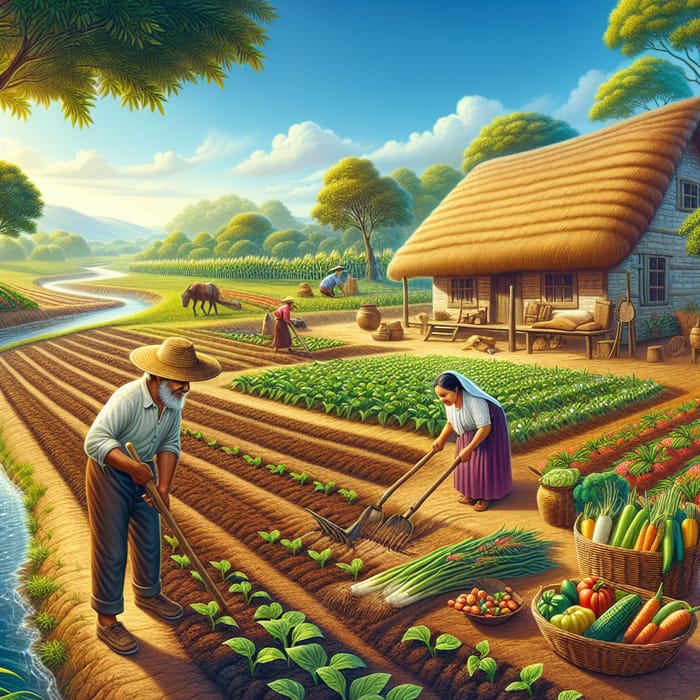
A typical subsistence farm in early America featured small plots worked primarily by family members.
Characteristics of Early American Farms
- Small land plots, typically 1-2 hectares (2-5 acres) in size
- Family-focused production with minimal hired labor
- Diverse crops and livestock to meet varied family needs
- Limited technological tools, primarily hand implements
- Over 50% of Americans directly engaged in farming activities
Daily life on these early farms was characterized by constant manual labor, seasonal rhythms, and community interdependence. While families aimed for self-sufficiency, they often relied on neighbors for specialized tasks or during harvest times. Community barn-raisings, corn huskings, and shared equipment were common practices that fostered strong social bonds even as families maintained their individual plots.
Subsistence Farming Yearly Cycle
flowchart TD
Spring[Spring Planting] -->|Seeds from previous harvest| Summer[Summer Cultivation]
Summer -->|Manual weeding & care| Fall[Fall Harvest]
Fall -->|Food preservation| Winter[Winter Planning]
Winter -->|Seed selection & tool repair| Spring
style Spring fill:#e1f5fe
style Summer fill:#e8f5e9
style Fall fill:#fff3e0
style Winter fill:#f3e5f5
The technology available to early American farmers was rudimentary by modern standards. Wooden plows with iron tips, hand scythes, flails for threshing, and simple animal-powered tools defined the technological limits of the era. These limitations meant that human and animal muscle provided nearly all the energy for farm work, creating natural constraints on farm size and productivity.
This historical research topic reveals how early American agriculture was more than just an economic activity—it was a complete way of life that shaped family structures, community relationships, and even the development of early American values emphasizing self-reliance and hard work.
Catalysts for Agricultural Evolution
The transformation of American agriculture from subsistence-based to industrial-scale operations didn't happen overnight. It was driven by a complex interplay of technological innovations, economic needs, and societal shifts that began in earnest during the Industrial Revolution of the 1800s and accelerated through the early 1900s.

The steel plow, popularized by John Deere in the 1830s, dramatically changed American farming capabilities.
Key Technological Innovations
Timeline of Revolutionary Agricultural Innovations
Major innovations that transformed American farming practices
Perhaps the most critical catalyst for agricultural transformation was the development of the American railroad system. As railroads expanded across the continent in the mid-19th century, they created unprecedented opportunities for farmers to access distant markets.

The expansion of railroad networks created new markets for agricultural products and encouraged regional specialization.
The railroad revolution had several transformative effects on American farming:
- Farmers could ship perishable goods to distant urban markets before spoilage
- Agricultural regions could specialize in crops best suited to their climate and soil
- New farming equipment could be distributed nationwide more efficiently
- Price information spread more rapidly, creating more integrated markets
- Rural communities became connected to urban centers, facilitating cultural exchange
This period also saw significant changes in farming techniques. Crop rotation, improved soil management, and early scientific approaches to agriculture began to increase yields even before mechanization became widespread. These developments laid essential groundwork for the more dramatic changes that would follow with mechanization.
For educators looking to communicate these complex transitions, social studies lesson plans can benefit tremendously from visual timelines created with tools like PageOn.ai's Vibe Creation feature, which allows for interactive exploration of how these innovations built upon one another to fundamentally transform American agriculture.
The Mechanization Revolution in American Farming
The mechanization of American agriculture represents one of the most profound technological transformations in human history. What began with simple improvements to hand tools eventually culminated in sophisticated machinery that could perform the work of dozens of laborers while dramatically increasing output.

The evolution of harvesting technology dramatically reduced labor requirements while increasing harvest speeds.
Impact on Agricultural Productivity
The transition from human and animal power to mechanical energy sources fundamentally changed the energy consumption patterns in agriculture. Early farming relied almost exclusively on renewable energy in the form of human and animal muscle power. With mechanization came new dependencies on fossil fuels:
Agricultural Energy Transition
flowchart LR
A[Human &
Animal Power] -->|Steam
Revolution| B[Steam
Power]
B -->|Internal
Combustion| C[Petroleum
Fuels]
C -->|Electricity
& Robotics| D[Multi-Source
Energy Systems]
style A fill:#f8d7da
style B fill:#d1ecf1
style C fill:#fff3cd
style D fill:#d4edda
Key machinery innovations that transformed American farming include:
- McCormick's Mechanical Reaper (1834) - Allowed a single person to harvest grain that would have required 5-6 laborers with scythes
- Steam-Powered Tractors (1870s) - Introduced engine power to farming, though limited by size and maneuverability
- Gasoline Tractors (early 1900s) - More practical and versatile than steam power, leading to rapid adoption
- Combine Harvesters (1920s-30s) - Integrated multiple harvest processes into a single machine operation
- Self-Propelled Equipment (mid-20th century) - Further reduced labor requirements while increasing efficiency
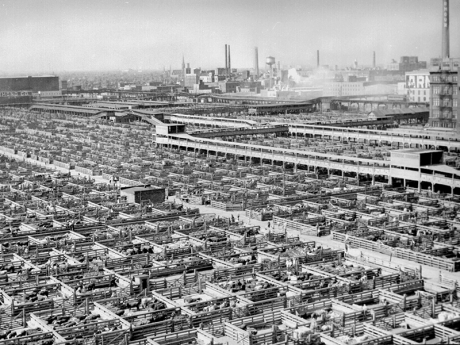
The landscape of American farms transformed dramatically as mechanization enabled larger, more specialized operations.
Mechanization didn't just change how farming was done—it reshaped the landscape itself. Fields grew larger and more uniform to accommodate machinery. Farm boundaries expanded as single operators could manage more acreage. Even the crops themselves changed, as varieties were developed specifically to thrive under mechanized cultivation and harvesting.
For students conducting sociology research topics, the mechanization of agriculture offers a fascinating case study in how technological change can reshape not just economic systems but entire social structures and cultural practices in rural communities.
Socioeconomic Impacts of Agricultural Industrialization
The industrialization of American agriculture triggered profound socioeconomic changes that extended far beyond farm fields. As farming became more mechanized and efficient, it set in motion demographic shifts, economic transformations, and cultural changes that would reshape the entire nation.
Rural to Urban Migration
As agricultural productivity increased, fewer farm workers were needed to produce more food. This created both push and pull factors:
Rural Push Factors
- Decreased farm labor needs due to mechanization
- Consolidation of farmland into larger operations
- Economic pressures on small-scale farmers
- Limited rural economic opportunities beyond agriculture
Urban Pull Factors
- Factory jobs created by industrialization
- Higher wages in urban manufacturing
- Better access to education and services
- Cultural attractions and modern conveniences
Agricultural Surpluses and Economic Growth
One of the most significant outcomes of agricultural industrialization was the creation of consistent food surpluses. These surpluses:
- Freed a large portion of the population to work in manufacturing and service industries
- Lowered food costs as a percentage of household income
- Enabled food exports, strengthening America's international trade position
- Led to improved nutrition and food security for the general population
- Fueled population growth through improved health outcomes
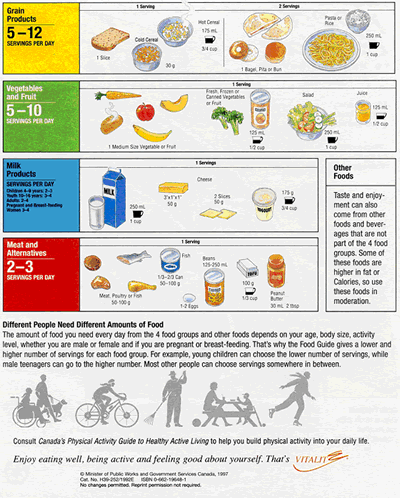
The American diet transformed as agricultural surpluses led to greater food variety and improved nutrition.
The Cash Economy Replaces Subsistence Systems
As American agriculture industrialized, it became increasingly integrated into the cash economy. This transition had far-reaching implications:
From Self-Sufficiency to Market Integration
flowchart TD
A[Subsistence Farming] -->|Gradual Transition| B[Mixed Subsistence/Market Farming]
B -->|Increasing Specialization| C[Commercial Agriculture]
C -->|Farm Consolidation| D[Industrial Agriculture]
A1[Self-Sufficient
Low Cash Needs] --- A
B1[Partial Market Dependence
Growing Cash Needs] --- B
C1[Market Dependent
High Cash Flow] --- C
D1[Fully Integrated with Markets
Capital Intensive] --- D
style A fill:#f8d7da
style B fill:#fff3cd
style C fill:#d1ecf1
style D fill:#d4edda
This transition brought significant changes to rural life:
- Farmers became more vulnerable to market fluctuations and price volatility
- Banking and credit systems became essential to agricultural operations
- Specialized knowledge of markets gained importance alongside farming expertise
- Rural communities became more connected to national economic trends
- Traditional self-sufficiency skills began to diminish as specialized production increased
For young students exploring these complex socioeconomic transitions, an essay writing lesson plan for grade 6 could use PageOn.ai's visualization tools to help contextualize these abstract concepts through compelling visual narratives that trace the journey of a hypothetical farming family through generations of agricultural change.
The Modern American Agricultural Landscape
Today's American agricultural landscape bears little resemblance to the small subsistence farms that dominated the early national period. Modern industrial agriculture operates on a scale and with technologies that would have been unimaginable to early American farmers.

Modern industrial farms utilize precision agriculture technologies and operate at massive scales.
Comparative Scale and Structure
| Characteristic | Subsistence Era (1700s-1800s) | Modern Industrial Era (2000s) |
|---|---|---|
| Average Farm Size | 1-2 hectares (2-5 acres) | 180 hectares (444 acres) |
| Workforce | ~50% of population in agriculture | ~1.3% of population in agriculture |
| Technology | Hand tools, animal power | GPS-guided machinery, automation, biotechnology |
| Crop Diversity per Farm | High (10-15+ varieties) | Low (1-3 varieties, specialized) |
| Market Integration | Minimal (self-consumption) | Complete (global supply chains) |
| Capital Requirements | Low ($500-$1,000 in today's dollars) | Very high ($1-5+ million) |
Environmental Consequences
The dramatic increase in agricultural productivity has come with significant environmental costs:
- Soil degradation through erosion and nutrient depletion
- Water pollution from fertilizers, pesticides, and animal waste
- Reduction in biodiversity due to monoculture practices
- High fossil fuel consumption and greenhouse gas emissions
- Groundwater depletion from irrigation in water-scarce regions
Modern Agricultural Technologies
The transformation in workforce participation has been particularly dramatic. In the early 1800s, more than half of all Americans worked directly in agriculture. Today, while U.S. agricultural output has increased more than tenfold, less than 2% of the population works in farming. This represents one of the most significant workforce shifts in human history.
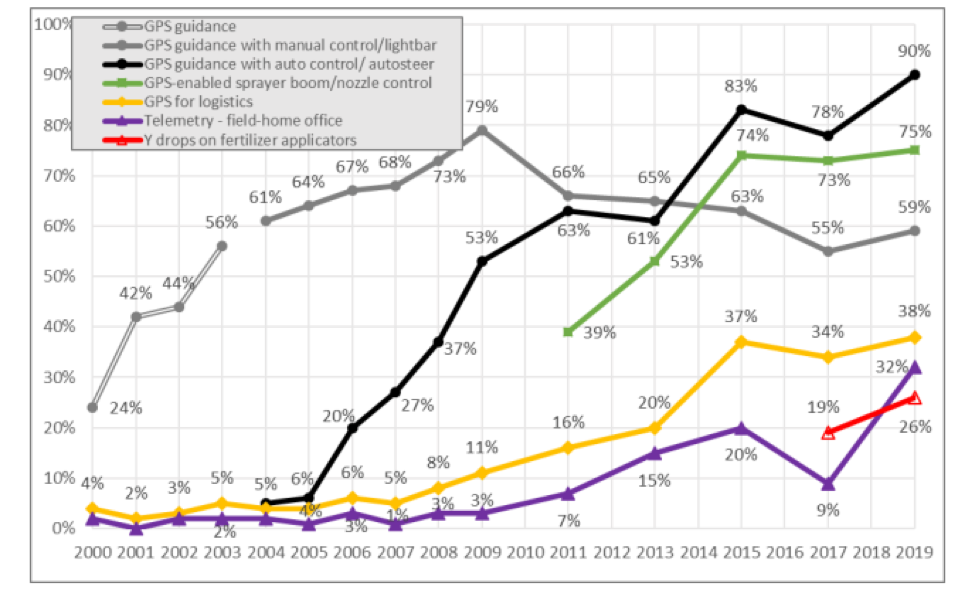
Modern farmers leverage sophisticated technologies including GPS-guided equipment and data analytics to maximize yields.
For college students exploring the profound impacts of agricultural industrialization, creating in-depth research topics for college students that examine the environmental, economic, and societal implications of our food production systems can provide valuable insights for sustainable future development.
Case Studies: Regional Agricultural Transformations
America's agricultural transformation didn't occur uniformly across the country. Different regions experienced unique evolutionary paths based on their geography, climate, economic conditions, and cultural factors. These regional case studies highlight how the journey from subsistence to industrial agriculture took different forms across the American landscape.
The Midwest: America's Breadbasket
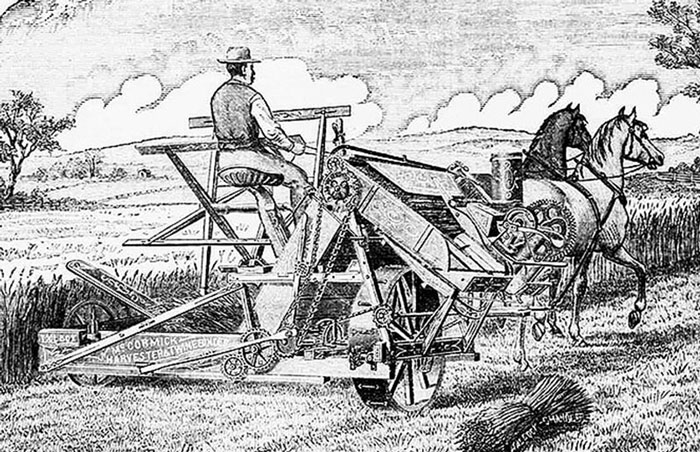
The Midwest transformed from small family grain farms to large-scale industrial operations over the course of a century.
The Midwestern transformation exemplifies the classic American agricultural revolution:
- Early 1800s: Small subsistence farms established by settlers on the prairie
- Mid-1800s: Steel plow innovation breaks tough prairie soil, expanding cultivation
- Late 1800s: Railroad expansion connects farms to eastern markets
- Early 1900s: Mechanization begins with early tractors and harvesters
- 1940s-1960s: "Green Revolution" brings hybrid seeds and chemical inputs
- 1980s-Present: Consolidation, computerization, and precision agriculture
California: From Gold to Green Gold
California's agricultural transformation followed a different trajectory:
California's agricultural development was characterized by:
- Skip of traditional subsistence phase in favor of commercial agriculture
- Early focus on high-value specialty crops rather than staples
- Massive irrigation projects transforming arid land into productive fields
- Reliance on migrant and immigrant labor rather than family farming
- Early adoption of industrial-scale operations and vertical integration
- Development of specialized growing regions for specific crops
The South: Cotton Revolution to Diversification
Southern Agricultural Transformation
flowchart TD
A[Plantation System
Pre-Civil War] -->|Civil War
& Emancipation| B[Sharecropping Era]
B -->|Cotton Price Collapse
& Boll Weevil| C[Agricultural Crisis]
C -->|New Deal Programs
& Mechanization| D[Diversification
& Modernization]
D -->|Consolidation
& Technology| E[Modern Southern
Agriculture]
style A fill:#f8d7da
style B fill:#fff3cd
style C fill:#f5c6cb
style D fill:#d1ecf1
style E fill:#d4edda
The Southern agricultural experience illustrates how historical factors including the legacy of slavery, sharecropping, and later economic challenges created a different evolutionary path:
- Early industrial-scale cotton production relied on enslaved labor rather than technology
- Post-Civil War sharecropping system delayed mechanization and modernization
- The boll weevil crisis in the early 20th century forced crop diversification
- Mechanization accelerated in the mid-20th century, displacing tenant farmers
- Large-scale poultry, forestry, and diverse crop operations emerged in recent decades

Southern agriculture evolved from cotton monoculture to a diverse agricultural portfolio over the 20th century.
These regional case studies demonstrate how the transition from subsistence to industrial agriculture took different paths across America, influenced by distinct historical, geographical, and socioeconomic factors. PageOn.ai's visualization tools can help students and researchers craft region-specific visual narratives that capture these nuanced transformations in compelling ways.
Legacy and Future Trajectories of American Agriculture
The journey from subsistence farming to industrial agriculture continues to shape American society, while new challenges and innovations point toward yet another potential agricultural revolution on the horizon. Understanding this legacy helps us navigate the complex choices ahead for our food systems.
Enduring Legacy of Agricultural Revolutions
Several key aspects of America's agricultural transformation continue to influence contemporary society:
- Food abundance that enables a primarily urban, service-oriented economy
- A national identity still shaped by agrarian myths and ideals
- Rural demographic challenges from continued population loss
- Environmental consequences requiring ongoing remediation
- Global food system leadership through exports and agricultural technology
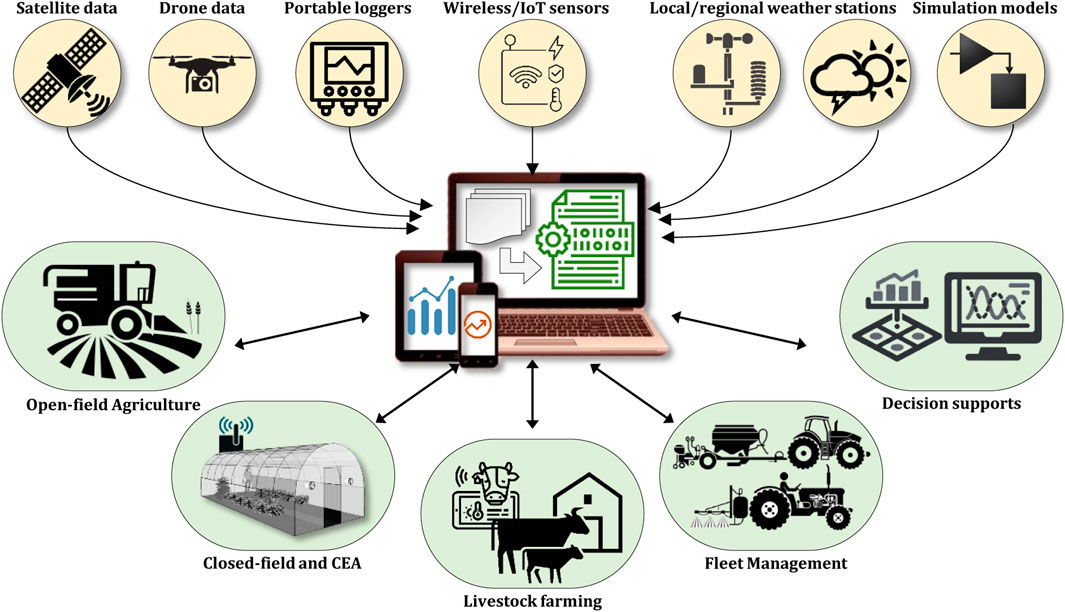
Modern agricultural innovation emerges from an interconnected ecosystem of farmers, scientists, technology companies, and policy initiatives.
Emerging "Fourth Agricultural Revolution"
Many experts believe we are witnessing the early stages of a fourth agricultural revolution characterized by:
Key Tensions in American Agriculture's Future
Industrial Efficiency
- Maximizes production per acre
- Creates economies of scale
- Requires significant capital investment
- Enables low consumer food prices
- Often relies heavily on external inputs
Sustainability Imperatives
- Preserves ecological resilience
- Reduces fossil fuel dependence
- Maintains soil health & biodiversity
- Often supports smaller-scale operations
- May have higher immediate production costs
These competing values create complex tradeoffs in determining the future path of American agriculture. Increasingly, innovators are seeking integrated approaches that combine the efficiency of industrial methods with the ecological wisdom of more sustainable practices.
Agricultural Evolution Timeline
flowchart LR
A[First Agricultural
Revolution
9000-7000 BCE] -->|Settlement
Domestication| B[Traditional
Agriculture
1700s]
B -->|Mechanization
Specialization| C[Industrial
Agriculture
1900s]
C -->|Computerization
Globalization| D[Modern
Agriculture
2000s]
D -->|Sustainability
Technology| E[Fourth Agricultural
Revolution
Emerging]
style A fill:#f9e4b7
style B fill:#b2dfdb
style C fill:#bbdefb
style D fill:#ffe0b2
style E fill:#c8e6c9
As we look toward the future of American agriculture, several key questions emerge:
- How can we balance productivity needs with environmental sustainability?
- What role will AI, robotics, and other emerging technologies play in reshaping farming?
- Can small and mid-sized farms find viability in an increasingly consolidated landscape?
- How will climate change alter growing regions and necessary farming adaptations?
- What new skills and knowledge will tomorrow's farmers need to succeed?
Visualizing these complex agricultural transformations—from America's historical shift from subsistence to industrial agriculture, and now potentially toward a new, more integrated model—requires sophisticated tools. PageOn.ai's suite of visualization capabilities allows researchers, educators, and students to create compelling visual narratives that capture both the historical journey and emerging possibilities in America's agricultural future.
Transform Your Visual Expressions with PageOn.ai
From historical agricultural timelines to complex socioeconomic transformations, PageOn.ai provides powerful tools to visualize and communicate complex ideas effectively. Our AI-powered platform makes it easy to create compelling visual narratives that bring your research, teaching, or presentations to life.
Start Creating with PageOn.ai TodayConclusion: Understanding America's Agricultural Journey
The transformation of American agriculture from small subsistence plots to vast industrial operations stands as one of the most significant socioeconomic transitions in human history. This journey fundamentally reshaped not just how Americans produce food, but where they live, how they work, and their relationship with the land.
By visualizing this complex transition through multiple lenses—technological, demographic, economic, and environmental—we gain crucial insights into both our past and our potential futures. The ongoing tension between industrial efficiency and environmental sustainability continues to define contemporary debates about food systems.
For educators, researchers, and students exploring these themes, PageOn.ai offers powerful tools to visualize complex agricultural transitions in compelling, accessible ways. Whether creating interactive timelines of agricultural innovations, mapping demographic shifts from rural to urban areas, or illustrating the complex web of modern food production systems, PageOn.ai's visualization capabilities help transform abstract concepts into clear visual expressions.
You Might Also Like
How to Design Science Lesson Plans That Captivate Students
Create science lesson plans that captivate students with hands-on activities, clear objectives, and real-world applications to foster curiosity and critical thinking.
How to Write a Scientific Review Article Step by Step
Learn how to write a review article in science step by step. Define research questions, synthesize findings, and structure your article for clarity and impact.
How to Write a Self-Performance Review with Practical Examples
Learn how to write a self-performance review with examples and tips. Use an employee performance review work self evaluation sample essay to guide your process.
How to Write a Spec Sheet Like a Pro? [+Templates]
Learn how to create a professional spec sheet with key components, step-by-step guidance, and free templates to ensure clarity and accuracy.
